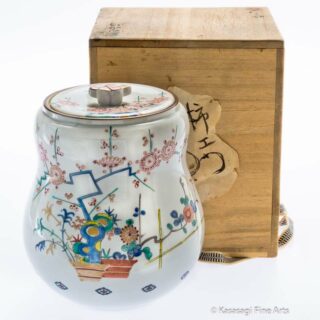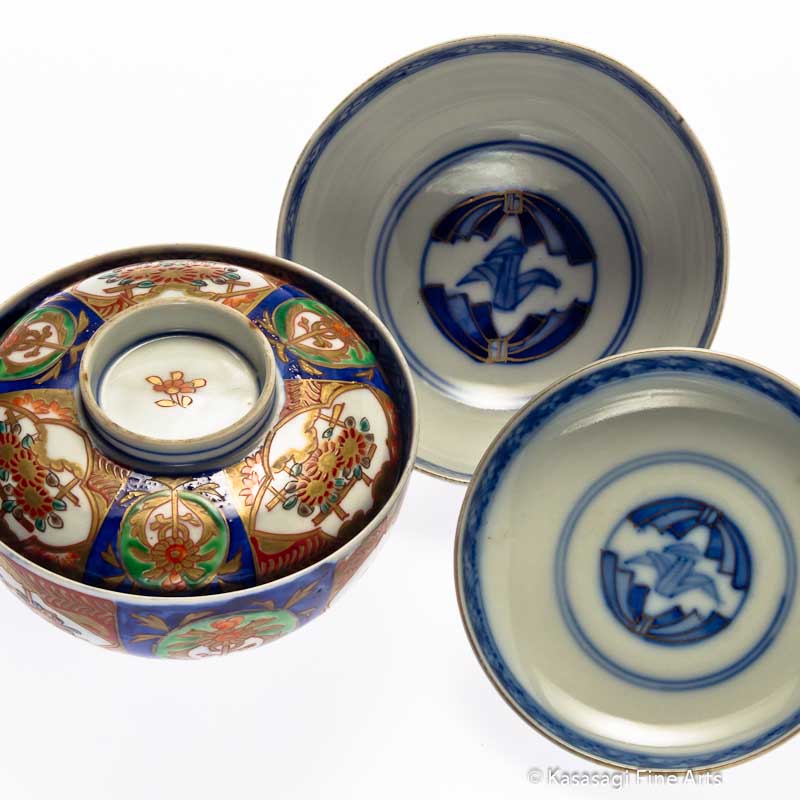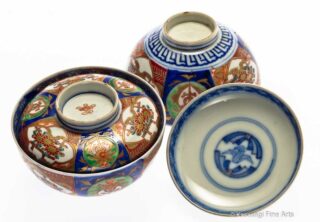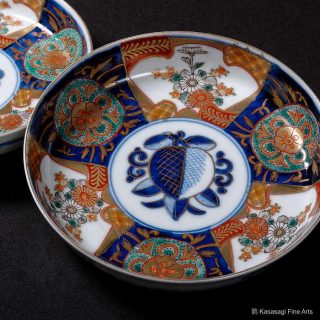The art of creating Japanese Kakiemon pottery started sometime in the early 1600s. By the 1680s the Kakiemon style of enamelling was generally practised at a number of potteries. They are readily distinguishable by their superior milk white paste and fine coloured decoration executed in a skilful fashion. Striking cerulean blue and soft coral reds dominated the decoration over primrose yellow and grass green as well as turquoise. Despite originally derived from Chinese decorations, in terms of sense of colour and handling of line they are unmistakably Japanese.
Kakiemon wares were much admired abroad and had more influence on Europen ceramics than any other multi coloured oriental porcelain.
This Mizusashi estimated to be the work of Kakiemon Sakaida bears the Kakiemon stamp on the inside lid and rim. It has a characteristics that Kakiemon has become famous for and is in excellent condition with no chips or fading to the enamel along with the original signed and stamped paulownia box. The colour of the enamel and decorations along with the accompanying box strongly indicate it is from sometime in the late 19th to early 20th Century.

These Kakiemon covered bowls and two 1860s low lipped dishes are in striking contrast to the pristine decoration of the Mizusashi. The bowls feature chrysanthemums and sasaki leaves with blue origami cranes decorating the inside lid and base. The dishes attributed to the Aoki Brothers Company also feature many detailed floral designs. Extensive gilding has also been applied on both items.
Kakiemon covered bowls Kakiemon Fuchi-daka low lipped dishes


